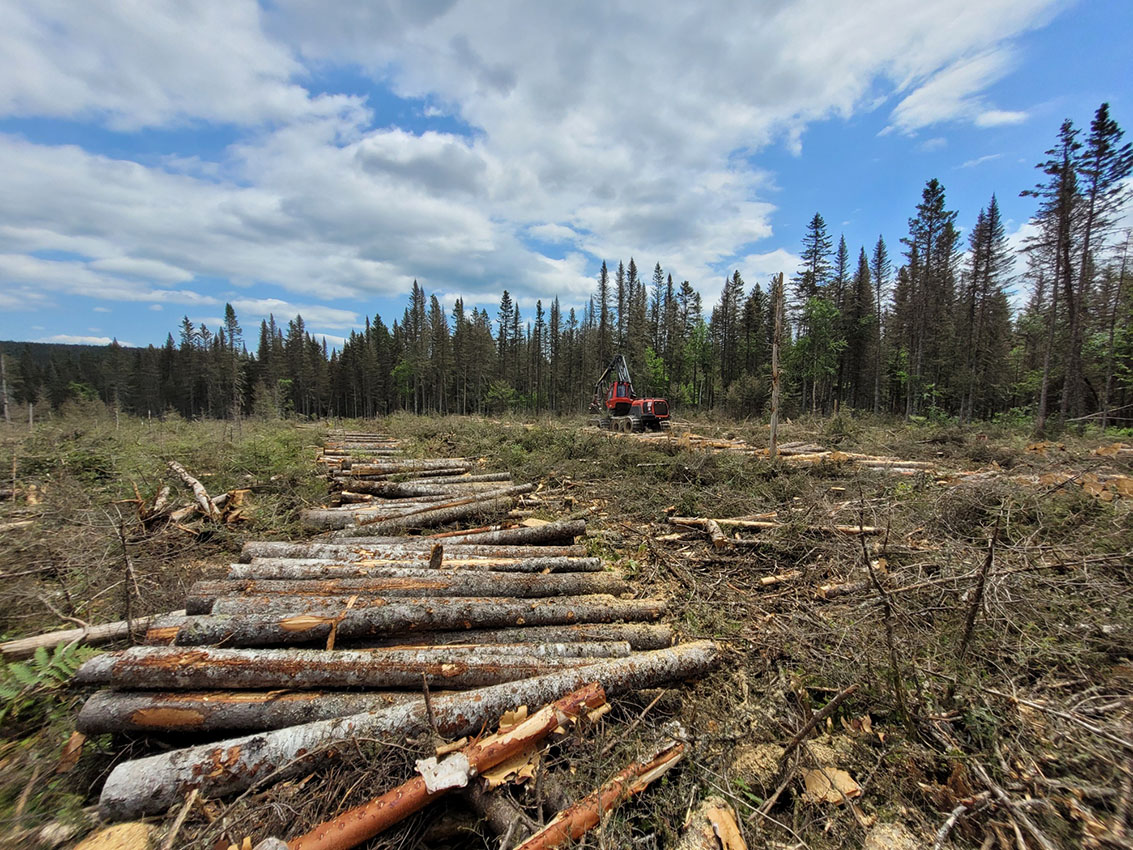
FAQ
Click on a question to reveal its answer
How often should I calibrate the measuring system on my head?
The accuracy of diameters and lengths should be verified every day. This is what is called a control check. Calibration involves adjusting the system based on a large number of log measurements. This is done on an as needed basis, for example when maintenance, repair or replacement of a measuring system component has been done to correct major measurement discrepancies (see the decision support tool).
Should I not perform a control check at every seasonal change?
If control checks and calibration performed as needed are integrated into a regular periodic monitoring, the changes brought on by season changes will be covered at the same time. Saying calibration is required at every season change implies that precise and accurate measurements are only important 4 times per year, which is not the suggested approach.
Why should I worry about the reliability of diameter measurements by the head if volume measurements are of no interest to me?
Three reasons:
- Modern heads use operating parameters that rely on diameter measurements to be effective: feed roller pressure, knife pressure, saw travel, etc. All these require a minimal diameter measuring accuracy.
- Modern systems predict stem taper based on diameter measurements to suggest bucking points. Inaccurate diameters will lead to faulty bucking suggestions requiring the operator to move the stem back and forth, leading to lost time.
- Reliable diameter measurements at the stem top and at the small/large transition points help to maximize fibre recovery and generate the highest log values.
Why should I not regroup all softwood species, for example SPF, in a single species category if my client does not require sorting these species?
Two reasons:
- Bark characteristics vary by species. The measuring wheel penetrates deeper into balsam fir bark than into spruce bark for example. As a result, using a single specie code (based on spruce for example) would lead to incorrect lengths when processing balsam fir (too short).
- Each specie has its own taper profile, and the measuring systems continuously update their taper predictions based on the last trees harvested of that specie. Regrouping all species in a single category will lead to less reliable predictions causing work slowdowns.
Which head is the most accurate?
The most accurate head is the one which is well maintained. FPInnovations has seen good and bad results with all makes of heads.
Why should I worry about the system’s capacities if quality objectives require that the machine operators make all the decisions?
Indeed, only the operators can identify defects such as forks, bends, rot and other quality criteria. A well-adjusted system will enable the operator to focus on the quality aspects while the computer will handle the stem/log size parameters. Conversely, a poorly adjusted system will force the operator to fight against some of the head’s actions and decisions, which will result in lost time and increased mental fatigue.
Is the optimisation mode necessarily better than the preselection mode?
It really depends on the context. In many simple cases, the results obtained with both will be the same. In more complex situations, the optimisation mode should in theory lead to higher value recovery. However, the price lists need to be correctly entered and the actual mix of log products merchandized will depend on the type of forest harvested. The question is complex and often specific to each operation.
The volume estimates from my machine match exactly those from the official scale in block A but are off by 20% in block B. How is this possible?
Two elements need to be taken into consideration:
Note: Official scaling and volume measurements from cut-to-length head differ in how they calculate volume. The official scale uses visual measurements of diameters at log ends and applies the Smalian formula to generate volume estimates. Heads measure the actual diameter over bark every 10 cm along the stem. While identical results cannot be expected, one can hope they are coherent and feature a small but constant bias regardless of stand types.
- Actually, the two volumes should not match, because volume measurement from the harvester head are done over bark, while the official scaling is done under bark. This is currently the case until reliable bark factors are available.
- Volume differences between blocks could be caused by differences in average stem size in each block. When the diameter measurements are not well calibrated over the whole range of diameters encountered, over and underestimates of volume are frequent when working in small or large timber
Note: Official scaling and volume measurements from cut-to-length head differ in how they calculate volume. The official scale uses visual measurements of diameters at log ends and applies the Smalian formula to generate volume estimates. Heads measure the actual diameter over bark every 10 cm along the stem. While identical results cannot be expected, one can hope they are coherent and feature a small but constant bias regardless of stand types.
